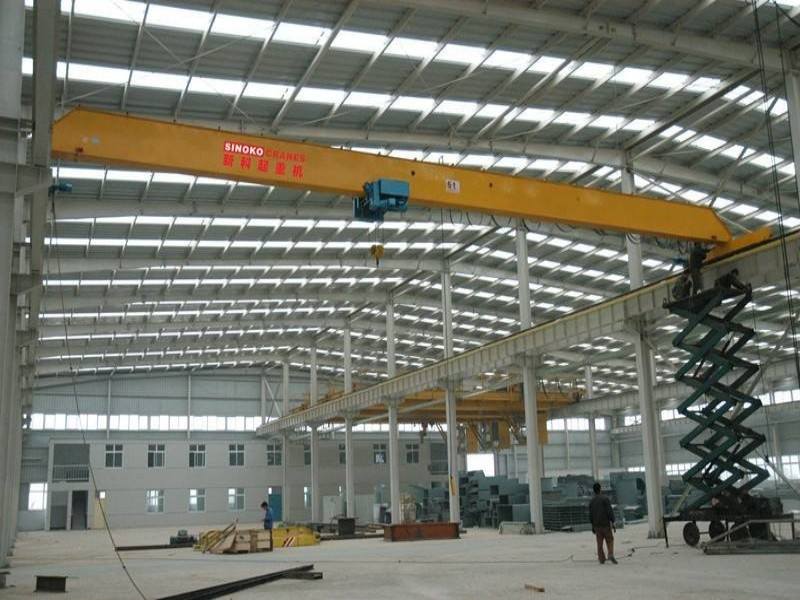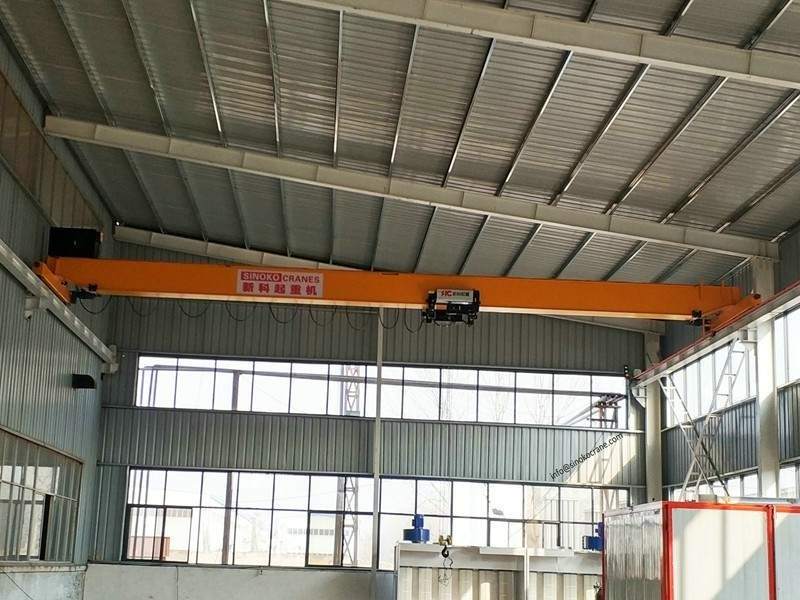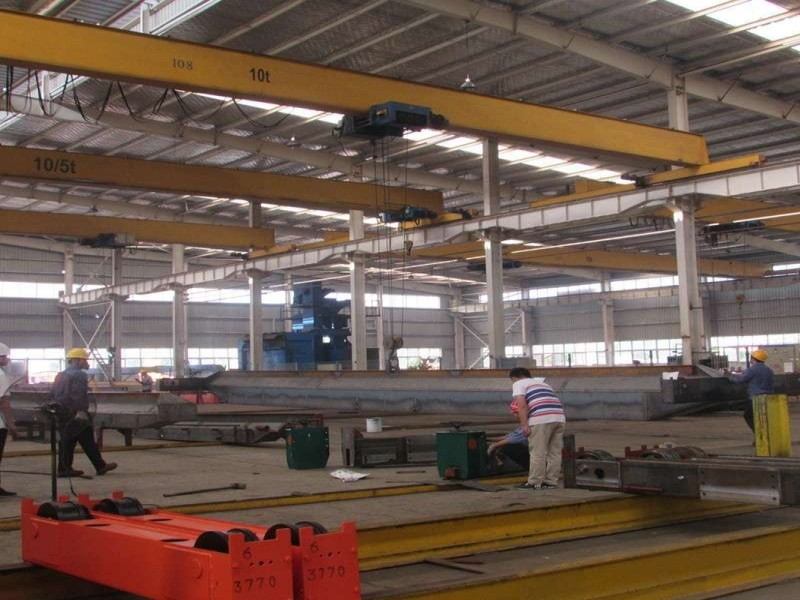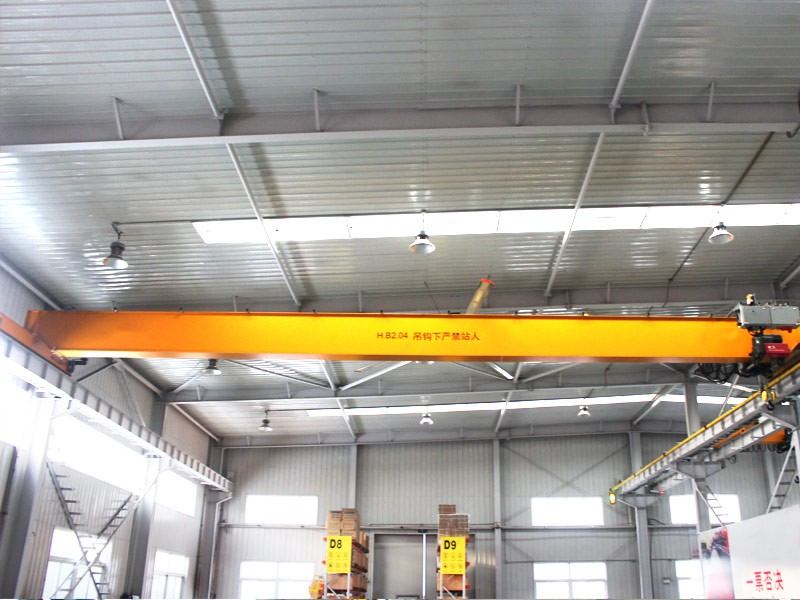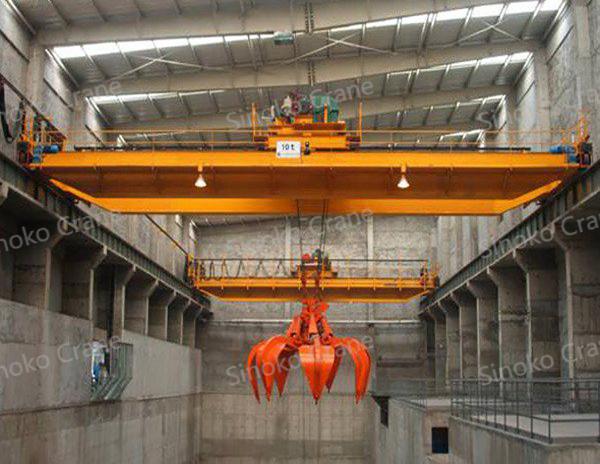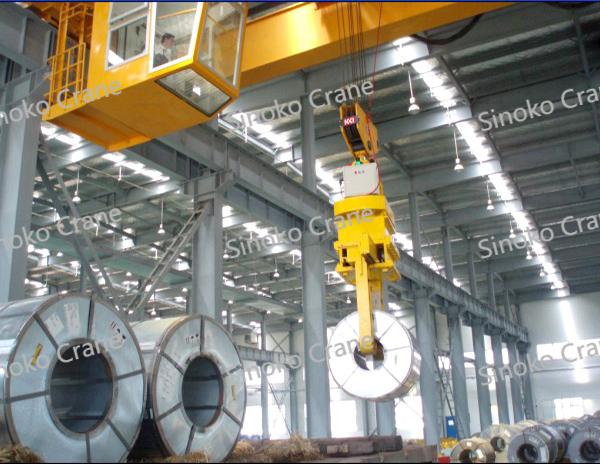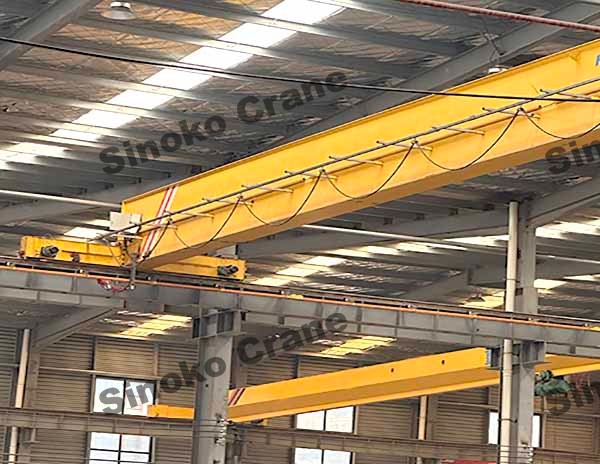Overview
Single girder overhead traveling crane, also known as a single girder bridge crane, is a type of crane that consists of a single horizontal beam, called a girder, which is supported at both ends and travels along elevated runways or tracks.
Variable speed single girder overhead traveling crane is widely used in workshops, warehouses and stockyards of machinery manufacturing workshops, metallurgical workshops, petroleum, petrochemical, ports, railways, civil aviation, power stations, paper-making, building materials, and electronics industries.
Variable speed electric overhead crane has the advantages of compact dimensions, low building clearance, light weight, and low wheel pressure.
Single Girder Overhead Travelling Crane Component
1. Main beam - The main traveling structure of the electric overhead crane which spans the width of the bay and travels in a direction parallel to the runway.
2. End trucks - Located on either side of the bridge, the end trucks house the wheels on which the entire crane travels. It is an assembly consisting of structural members, wheels, bearings, axles, etc., which supports the bridge girder(s) or the trolley cross member(s).
3. Runway - The rails, beams, brackets and framework on which the crane operates.
4. Trolley - The trolley is the moving component of the crane that travels along the bridge girder(s) horizontally. It carries the hoisting mechanism and is responsible for the lateral movement of the load.
5. Hoist - The hoist is the lifting mechanism of the crane. It is mounted on the trolley and is used to lift and lower the load. The hoist typically consists of a motor, gearbox, drum, ropes or chains, and a hook or other lifting attachment.
6. Electrical System - The electrical system of the single girder overhead traveling crane includes various components such as motor controls, contactors, limit switches, push buttons, pendant control stations, and wiring. It provides power and control for the crane's movement and lifting operations.
7. Pendant Control - The pendant control station is a handheld control device connected to the crane by a flexible cable. It allows the operator to control the crane's movements, including hoisting, lowering, and traveling, from a safe distance.
8. Safety Features - Single girder overhead traveling cranes are equipped with several safety features to ensure safe operation. These features may include overload protection devices, limit switches to prevent over-travel or collision, emergency stop buttons, and warning alarms.
9. End Stops - End stops are installed at the ends of the runway to prevent the crane or trolley from inadvertently traveling off the runway.
10. Optional Accessories - Single girder overhead traveling cranes can be equipped with various optional accessories based on specific requirements. These may include radio remote controls, festooned electrification systems, anti-collision devices, and auxiliary hoisting mechanisms.
Features
Space-Saving Design: The single girder configuration maximizes the available space in your facility, allowing for efficient material handling without compromising on performance.
High Performance: With its impressive lifting capacity and precise control systems, our overhead traveling crane ensures smooth and efficient load handling, reducing downtime and increasing productivity.
Enhanced Safety: Equipped with advanced safety features, including overload protection and emergency stop systems, this crane prioritizes the safety of your operators and the surrounding environment.
Easy Maintenance: Designed for ease of maintenance, our single girder crane minimizes downtime and reduces maintenance costs, keeping your operations running smoothly.
Customizable Options: Tailored to your specific requirements, our overhead traveling crane can be customized with additional features, such as remote control operation, variable speed controls, and specialized lifting attachments.
Specification
| Lifting capacity (ton) | Span (m) | Lifting height (m) | Lifting speed (m/min) | Hoist travelling speed (m/min) | Tavelling speed (m/min) |
| 1 | 7.5m-22.5m | 6m-24m | 0.8/5 | 2-20 | 3-30 |
| 2 | |||||
| 3.2 | |||||
| 5 | |||||
| 10 | |||||
| 12.5 | |||||
| 16 | 9m-24m | 0.66/4 | |||
| 20 |
At Sinokocranes, we are committed to delivering high-quality and innovative lifting solutions. With our expertise and dedication to customer satisfaction, we have become a trusted provider of overhead traveling cranes. Choose Sinokocranes for superior performance, durability, and exceptional service.
Elevate your material handling capabilities with the Single Girder Overhead Traveling Crane. Experience efficient and reliable lifting operations while maximizing your productivity. Contact us today to request a quote and take your operations to new heights!
CASE
Explore our wide range of crane project cases across various industries to see how Sinoko's lifting solutions deliver performance, safety, and reliability in action.
Installation of QZ-Type Grab Bucket Bridge Crane Project Case
The Sinoko QZ-Type Grab Bucket Bridge Crane was specially designed for a Brazilian client as a grab bucket crane, which significantly improved the client's work efficiency and received unanimous praise from the client.
Learn More Get a Quote32T Steel Coil Handling Crane Project Case
Sinoko Crane with years of experience in crane manufacturing and design, the steel coil handling crane has helped customers reduce costs and improve the efficiency of steel coil transportation.
Learn More Get a Quote3× 5T European-Style Single-Girder Cranes for Kenyan Sugar Refinery
Sinoko cranes has designed three 5-ton bridge cranes for Kenyan customers, which have solved their problems. Come and contact Sinoko cranes to solve your lifting problems.
Learn More Get a QuoteFAQs
Variable‑speed refers to the ability of the crane’s motor to run at continuously adjustable speeds—achieved by using a Variable Frequency Drive (VFD)—allowing operators to smoothly ramp up or down for precise load handling, instead of relying on fixed speeds or abrupt starts and stops .
A VFD allows the crane motor to match its power output to the actual load requirement, drawing only the necessary energy. This adaptive control reduces electricity consumption, especially under light or cyclic loads, and cuts long‑term operating costs.
Absolutely. Smooth acceleration and deceleration provided by VFDs reduce mechanical shock on brakes, gears, motors, and structural components. This minimizes wear and tear—especially on brake systems—and helps extend overall equipment lifespan.
Yes—variable‑speed control enables precise speed adjustment (sometimes with a broad ratio like 40:1), allowing for fine “creep” movements. This improves accurate load placement and reduces load swing, making operations safer and faster.
Modern VFDs often include built‑in safety features such as Safe Torque Off (STO), overload detection, sensorless anti‑sway control, and programmable limits. They also offer digital diagnostics—fault codes, maintenance alerts, and remote access—for faster troubleshooting and improved uptime.
Key considerations include matching the VFD capacity to the crane’s duty cycle and load dynamics; including braking units or resistors to handle regenerative energy; choosing advanced control modes (e.g., vector control for precise torque regulation); and ensuring the system is rugged enough for dusty or harsh environments .













